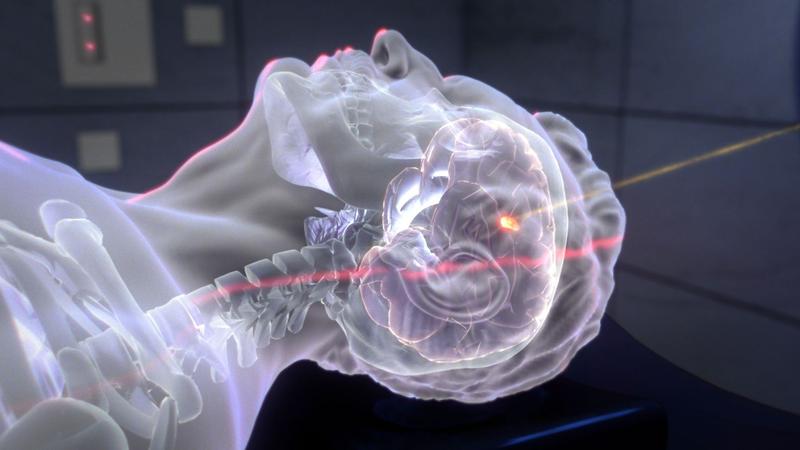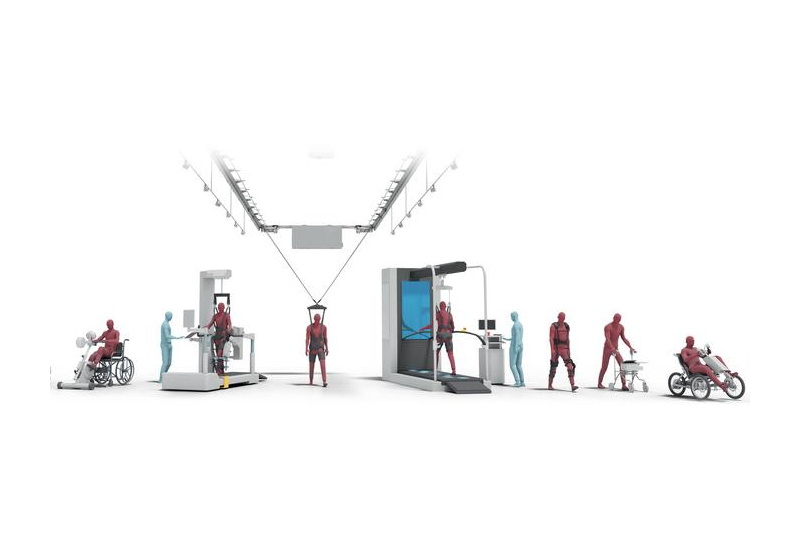
Simple measurement method from Dresden improves accuracy in proton beam therapy

Tumors can be precisely targeted with proton beam therapy. Dresden-based scientists are looking for ways of monitoring the course of the beam in real time.
HZDR / AIFilm
A proton beam is similar to a bullet in that it has a certain projectile range. The power of destruction of the charged particles is greatest shortly before they stop. “The effect could be concentrated on a specific point in a human body – in our case on a tumor,” explained Dr. Guntram Pausch of the OncoRay center.
“In this way it is possible to inflict severe damage on the diseased cells and yet leave the surrounding healthy tissue unscathed.” The depth of penetration depends on the initial speed of the beams and the composition of the tissue – and herein lies the challenge, as the radiation expert explained.
“Even a trifle like a stuffed nose in the preliminary examination can distort the data for the treatment plan and, later on, this will mean that the beam will not stop right on target. Therefore we have to consider safety margins around the tumor during the treatment.”
Up to now it has only been possible to reduce this element of uncertainty with the aid of computed tomography before the treatment or indirectly by assessing the effect of the radiation after the treatment. This is why the Dresden-based scientists are looking for a way to measure the range of the particle beam in real time. Gamma radiation is thought to be a helpful means in this respect.
This type of radiation is generated by nuclear reactions triggered by the protons on their journey through the tissue. “The existing methods attempt to measure this gamma radiation using complex and expensive detector systems in order to track the journey of the protons,” said Pausch, summarizing the latest research endeavors. “It will take another few years before this can be used in the hospitals.”
He developed, therefore, together with Dr. Fine Fiedler of the Helmholtz-Zentrum Dresden-Rossendorf and her team an alternative method called “Prompt Gamma Timing”. This new method is based on a time measurement for which just one detector is needed.
Rapid identification of nonconformities
The scientists focus on a fundamental physical effect: the protons need a certain amount of time to reach the place where they develop their greatest destruction potential. With the new method they, therefore, measure the time span between the point at which the beam enters the body and the point at which the gamma radiation hits the detector. “If the measured time spectra differ from the ones previously calculated, then the beam does not hit its target with sufficient accuracy,” added Pausch.
“In this case we would notice this immediately, and could adapt the radiation to the new parameters.” In order to confirm their assumptions, the researchers tested the method with the world market leader in proton beam therapy systems, Ion Beam Applications (IBA).
To do this, they went to the West German Proton Therapy Centre in Essen where they treated test objects with proton beams as normally used in radiation therapy. In these experiments the scientists were able to detect deviations of just a few millimeters with their method. On this basis, the safety margins around the tumor could be decreased, the effectiveness of the treatment increased, and at the same time healthy tissue could be still better protected.
However, the researchers also studied factors which may limit the accuracy of the method, as Guntram Pausch explained. Nevertheless, he sees great potential for the approach. “As the experiments have shown, our method could be applied in order to rule out appreciable deviations from the treatment plan during the therapy.”
Guntram Pausch, whose OncoRay group “In-vivo Dosimetry for New Types of Radiation” is funded by the German Federal Ministry of Education and Research (BMBF), sees in the new technology a fast and feasible way of providing a method of treatment verification for clinical use.
“Our approach could tide us over until more elaborate detector systems have been developed and tested.” Until the end of this year, Pausch and his team want to conduct tests on phantoms, which model the human tissue and organ structure. Should the method also prove reliable in these trials, it could soon make the leap to day-to-day clinical practice.
Background: The University Hospital Carl Gustav Carus Dresden is the first institute in Eastern Germany to back radiotherapy with protons in the fight against cancer. The first courses of treatment on tumor patients began in the middle of December 2014. The plan is now to expand the capacity gradually to 400 to 500 patients per year.
There are two other university hospitals in Germany besides Dresden which are offering the proton beam therapy, namely the Heidelberg Ion-Beam Therapy Center and the West German Proton Therapy Centre in Essen. The Dresden complex is used for both patient care and for research. Therefore, the University Hospital Carl Gustav Carus has joined forces with the OncoRay center and the HZDR to form the University Proton Therapy Dresden (UPTD).
_Publication:
F. Hueso-González, W. Enghardt, F. Fiedler, C. Golnik, G. Janssens, J. Petzoldt, D. Prieels, M. Priegnitz, K. Römer, J. Smeets, F. Vander Stappen, A. Wagner, G. Pausch, „First test of the prompt gamma ray timing method with heterogeneous targets at a clinical proton therapy facility”, Physics in Medicine and Biology 60 (2015) 6247–6272 (DOI:10.1088/0031-9155/60/16/6247)
_Further information:
Dr. Guntram Pausch
National Center for Radiation Reseach in Oncology – OncoRay
Phone +49 351 458-7414 | E-Mail: guntram.pausch@oncoray.de
Dr. Fine Fiedler
Institute of Radiation Physics at HZDR
Phone +49 351 260-2973 | E-Mail: f.fiedler@hzdr.de
_Media contact:
Simon Schmitt | Science editor
Phone +49 351 260-3400 | E-Mail: s.schmitt@hzdr.de
Helmholtz-Zentrum Dresden-Rossendorf
Bautzner Landstr. 400 | 01328 Dresden, Germany | www.hzdr.de
The Helmholtz-Zentrum Dresden-Rossendorf (HZDR) is conducting research in the areas of energy, health, and matter. The following set of questions provides the focal point for this research:
• How can energy and resources be utilized in an efficient, safe, and sustainable way?
• How can malignant tumors be more precisely visualized, characterized, and more effectively treated?
• How do matter and materials behave under the influence of strong fields and in smallest dimensions?
Since 2011, the HZDR has been a member of the Helmholtz Association, Germany's largest scientific organization. Some 1,100 employees are working at one of four research sites in Dresden, Leipzig, Freiberg, and Grenoble/France – approximately 500 of HZDR employees are scientists, including 150 Ph.D. students.
http://www.hzdr.de/presse/gamma_timing












